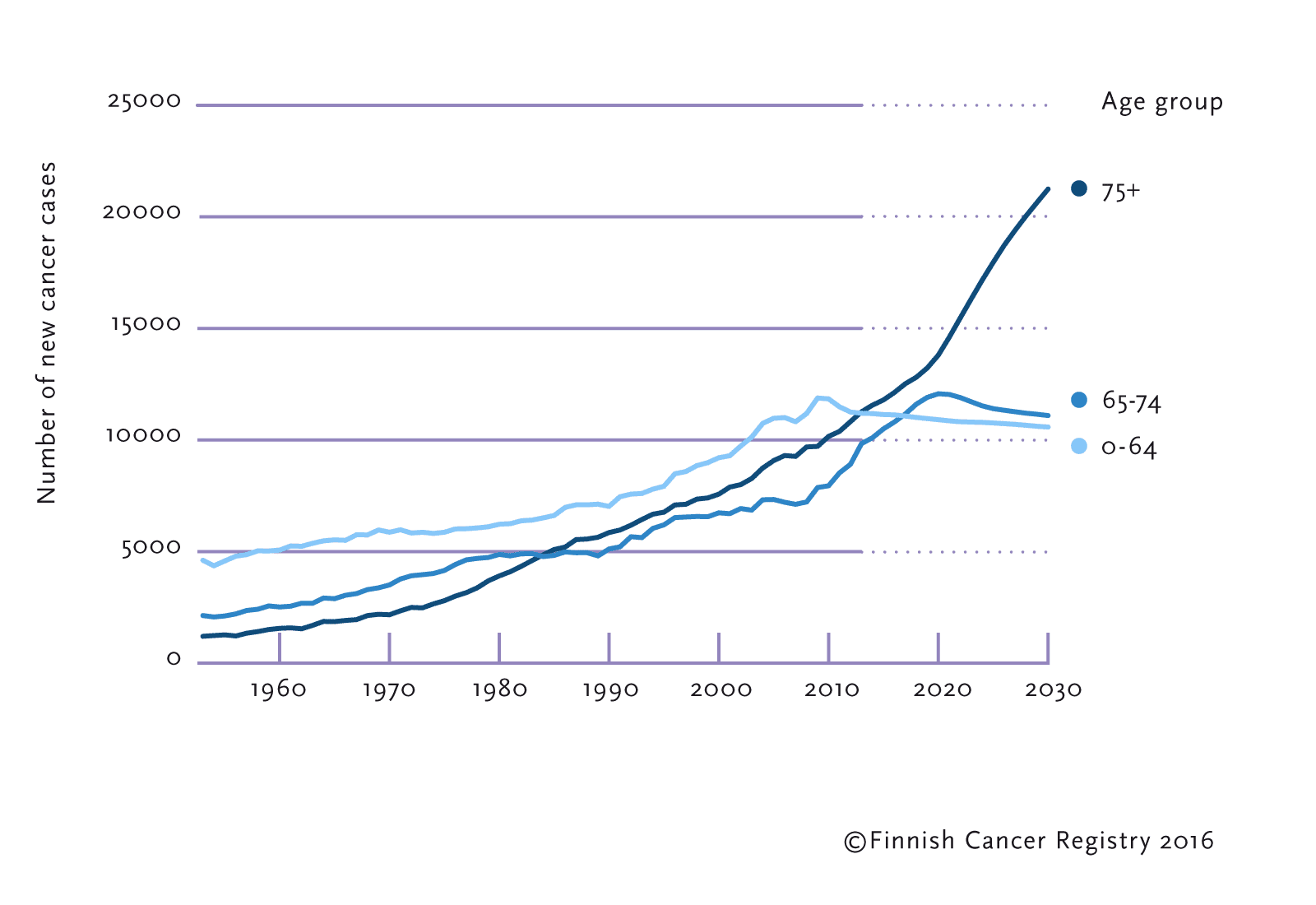Should the age-adjusted incidence of all cancer types remain at the level of years 2009-2013 in the future as well, the number of cancer cases would increase 38% in men, and 18% in women. The number of cancer cases of women is projected to increase by clearly more than that–29 percent–since predictions indicate an increased risk of skin cancers for women, and the risk of developing breast cancer increases markedly for women over 75 years of age.
The future trends of most cancer types follows the directions observed in the past (Tables 1-2, Figures 3-4). Men’s lung cancer will clearly become increasingly rare, while the female lung cancer incidence is estimated to further increase to some extent. Thus in 2030 more than 1 200 cases of lung cancer would be detected in women, which would be under 700 fewer than in men. Skin cancers have become much more common over the last few years, and the age-adjusted incidence is estimated to increase further. Already more skin cancers are diagnosed annually than colorectal cancers.
The increase in the number of cases means that cancer requires a growing share of health resources. In addition to cancer diagnostics, more resources are needed for active and supportive care, for the treatment of complications from treatment, palliative treatment and follow-up.
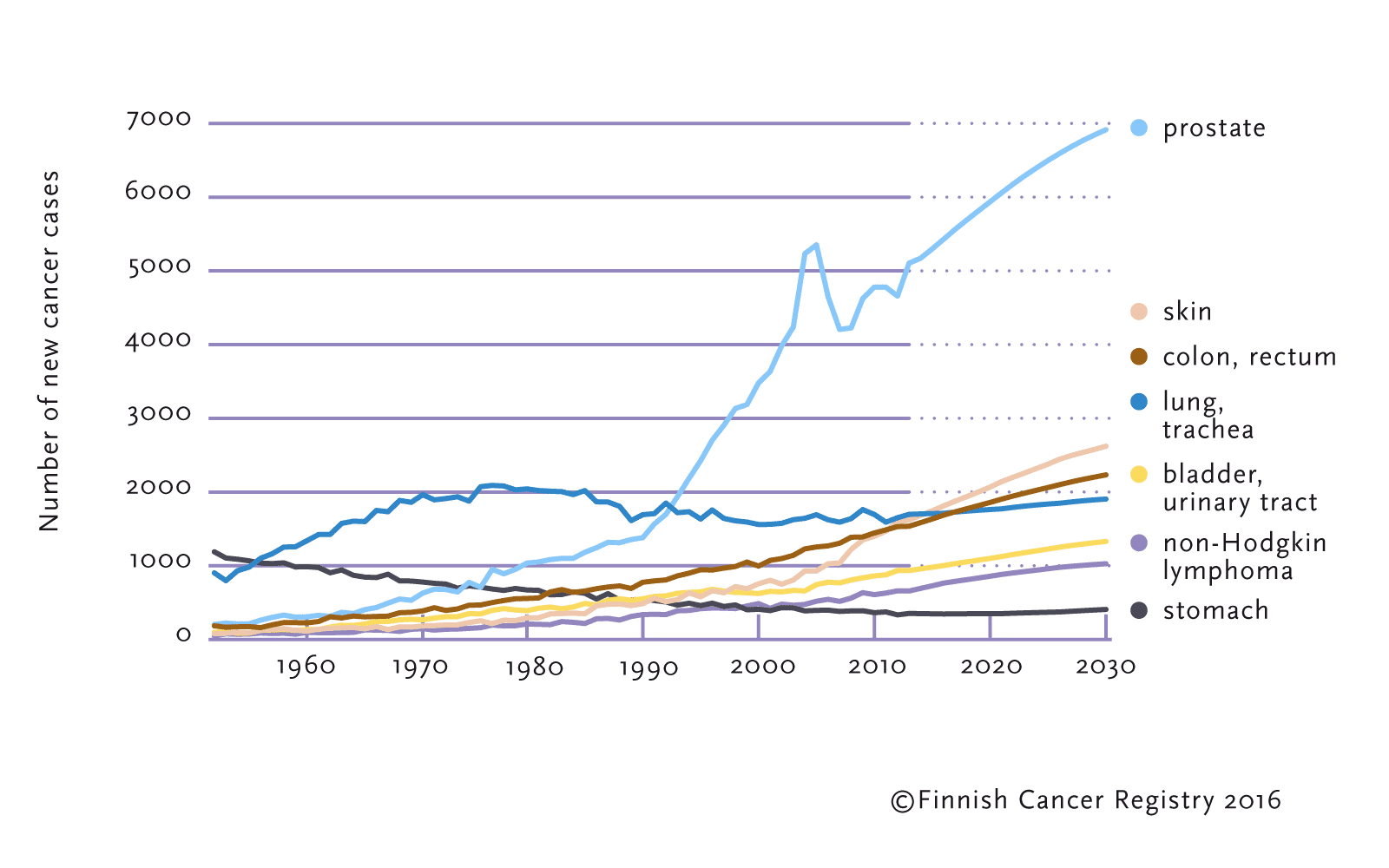 Figure 3. Number of new cancer cases detected annually for men in 1953–2013 and projected number of cases until 2030. Cancer sites with the largest number of patients are included.
Figure 3. Number of new cancer cases detected annually for men in 1953–2013 and projected number of cases until 2030. Cancer sites with the largest number of patients are included.
Disease of a growing number of people
The sheer increase in the number of cases does not tell the whole story of the future workload. Cancers with poor prognosis, such as lung, stomach and esophageal cancer, become rarer. An increasing proportion of cancers are curable. Also, the survival time of patients with incurable cancer will be longer as treatments advance.
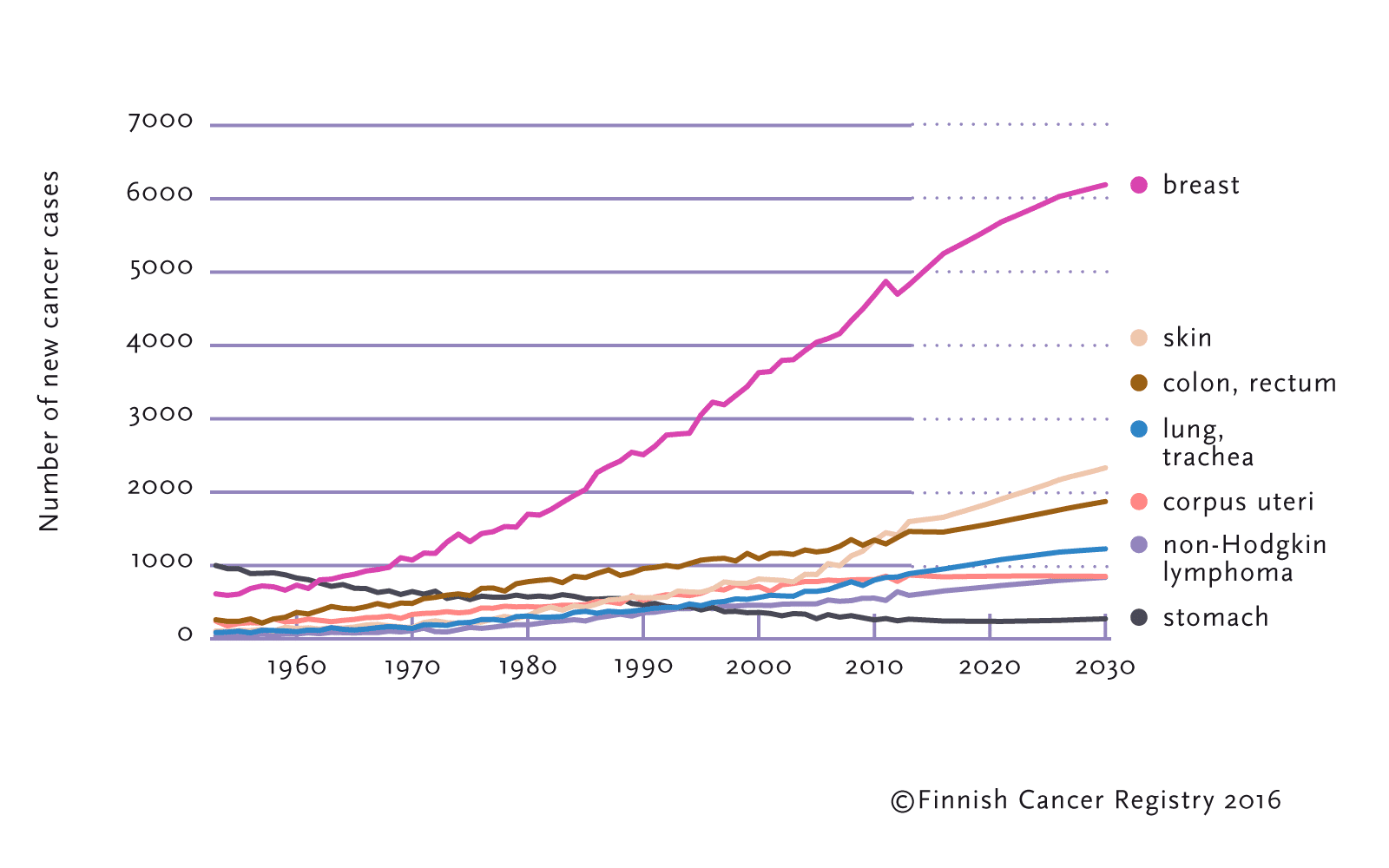 Figure 4. Number of new cancer cases detected annually for women in 1953–2013 and projected number of cases until 2030. Cancer sites with the largest number of patients are included.
Figure 4. Number of new cancer cases detected annually for women in 1953–2013 and projected number of cases until 2030. Cancer sites with the largest number of patients are included.
The active care of elderly patients or patients affected with a number of basic diseases is possible. On the other hand, the cancer treatment of elderly patients or patients otherwise in weak health burden health care more than basic care and the treatment of healthy working patients.
It is estimated that at the end of 2030 about 73 000 male and 65 000 female cancer survivors who were diagnosed less than five years earlier, will be alive. These patients require a lot of specialized health care resources due to cancer treatment and follow-up. Compared to the 2013 the number of cancer patients alive will increase 46% in men and 29% in women. In particular, the amount of over 75-year-olds who have been diagnosed with cancer will increase, the prediction suggests an increase in men of 110% and 100% in women.
Cancers are closely connected to an individual’s lifestyle, behavioral habits and the aspects of their living environments. Some cancers can be prevented, and it is possible to change the development trends of cancers.
The main challenges in cancer research over the next decades have not changed: It is still important to find causes of cancer and to develop methods for the early diagnosis of cancer. The challenge to society’s decision-makers remains to find the means to make living conditions safer and support people in life-style changes to better enhance health.
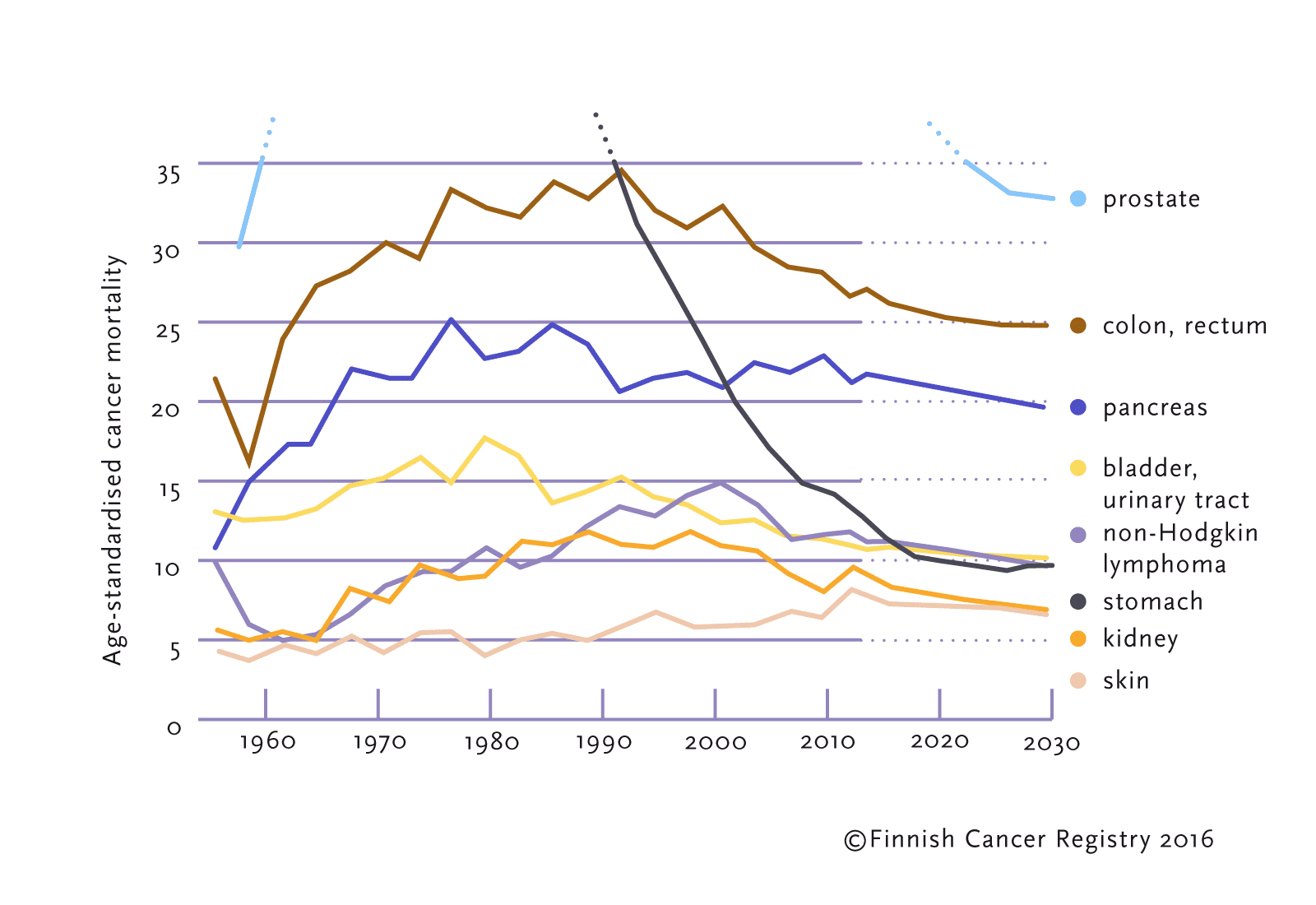
Figure 5. Age-standardised mortality rate (per 100 000 person-years) for men in 1953–2013 and projected rate until 2030. Cancer sites with the largest mortality are included.
Cancer mortality
Cancer is a very common disease group and it is known in every family. However, fewer and fewer people will die from cancer (Figures 1, 5-6). According to predictions, the age-adjusted mortality rate will decrease by 13% in men and 7% in women from 2013 to 2030. Amongst men, lung, prostate and stomach cancer mortality will continue to decline. Women’s mortality rates for breast, ovarian and stomach cancer and non-Hodgkin lymphoma will decrease, but the mortality rate of lung cancer will increase.
In a survey performed in May 2006, approximately one in four Finnish considered cancer a very frightening disease, but in the future this fear is likely to decrease. Even now, the fear of cancer is least among highly educated people: proper information reduces pain.
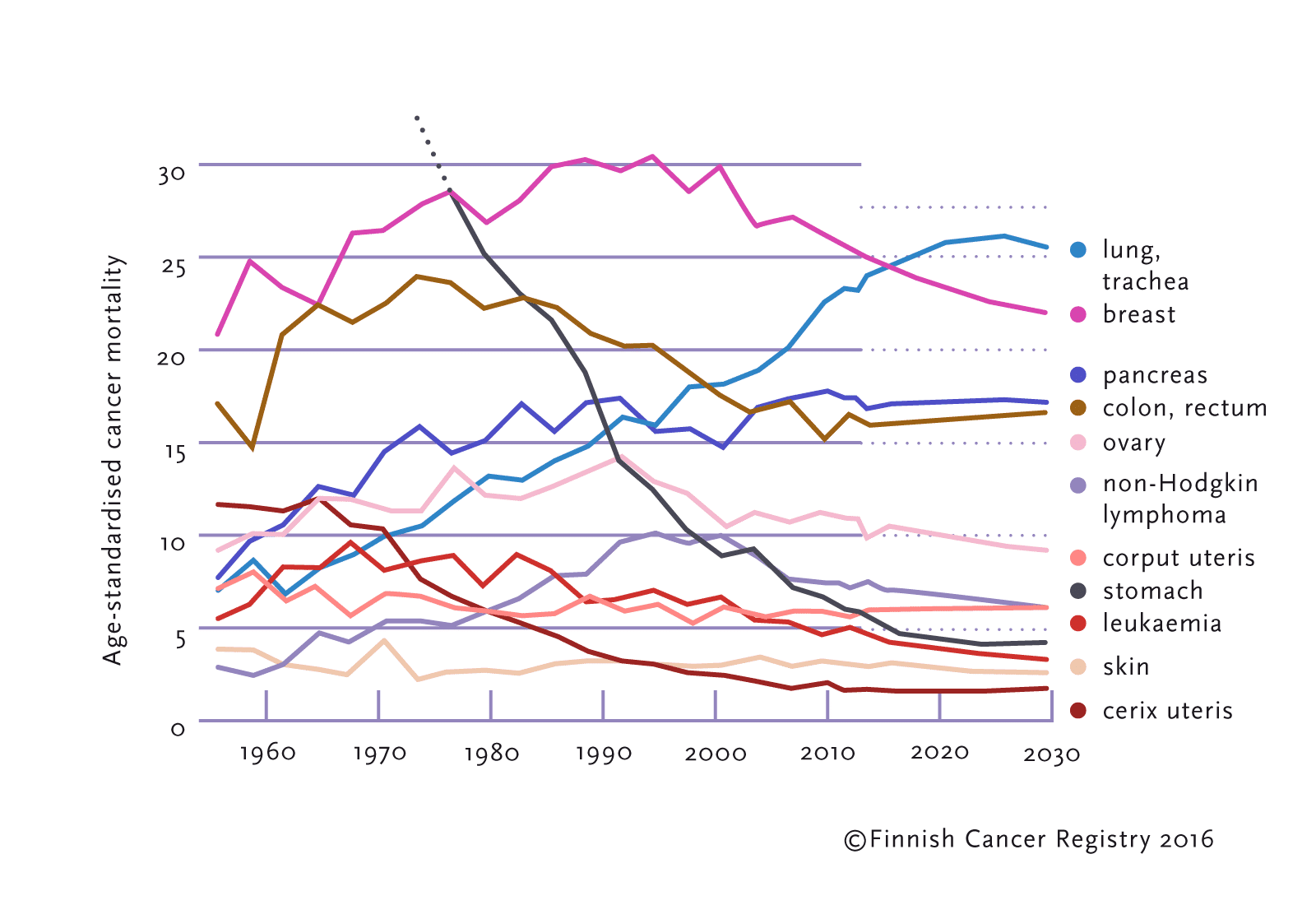
Figure 6. Age-standardised mortality rate (per 100 000 person-years) for women in 1953–2013 and projected rate until 2030. Cancer sites with the largest mortality are included.
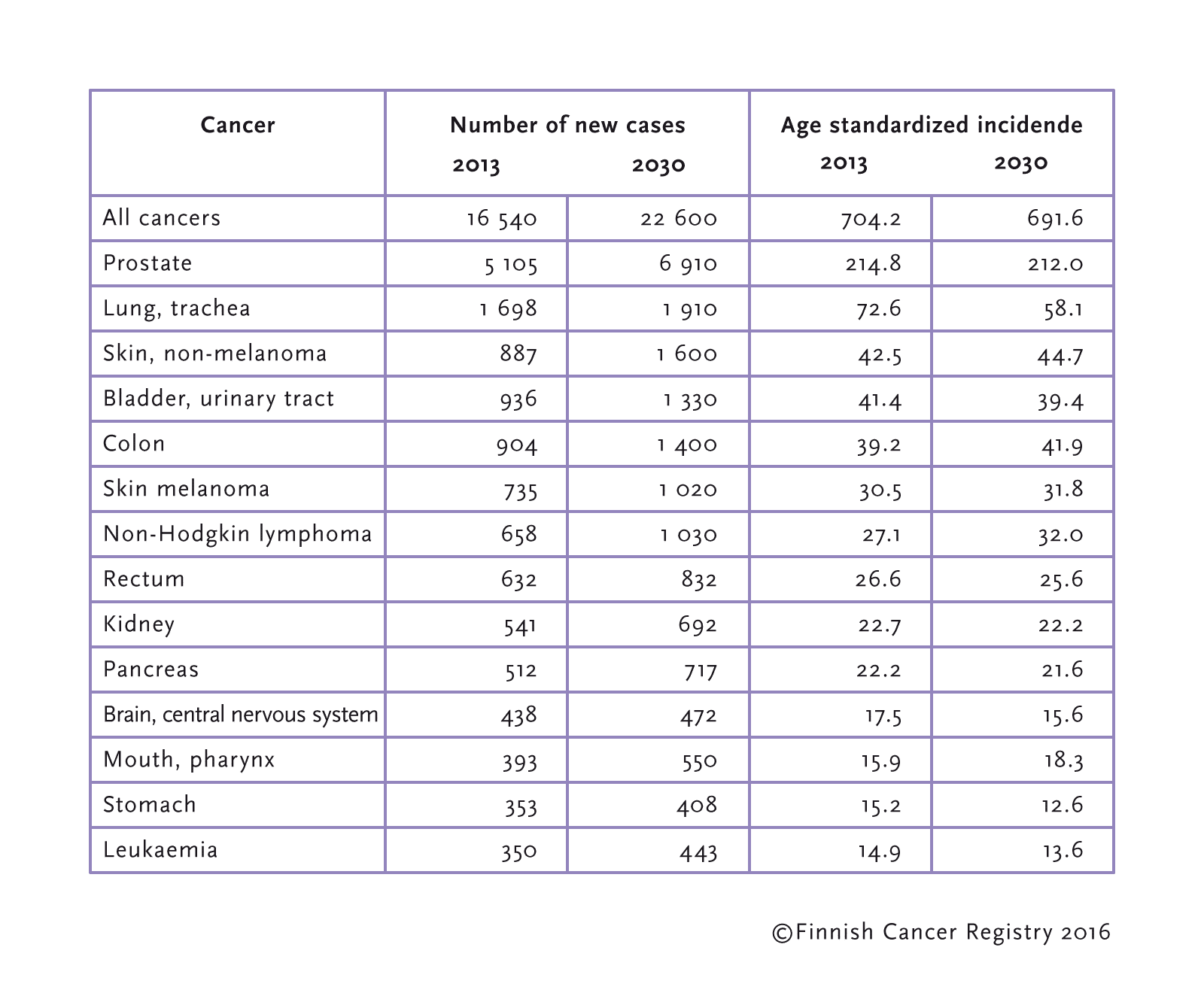
Figure 1 Number of patients and age-standardised incidence of most common cancers for men in 2013 and prediction for 2030.
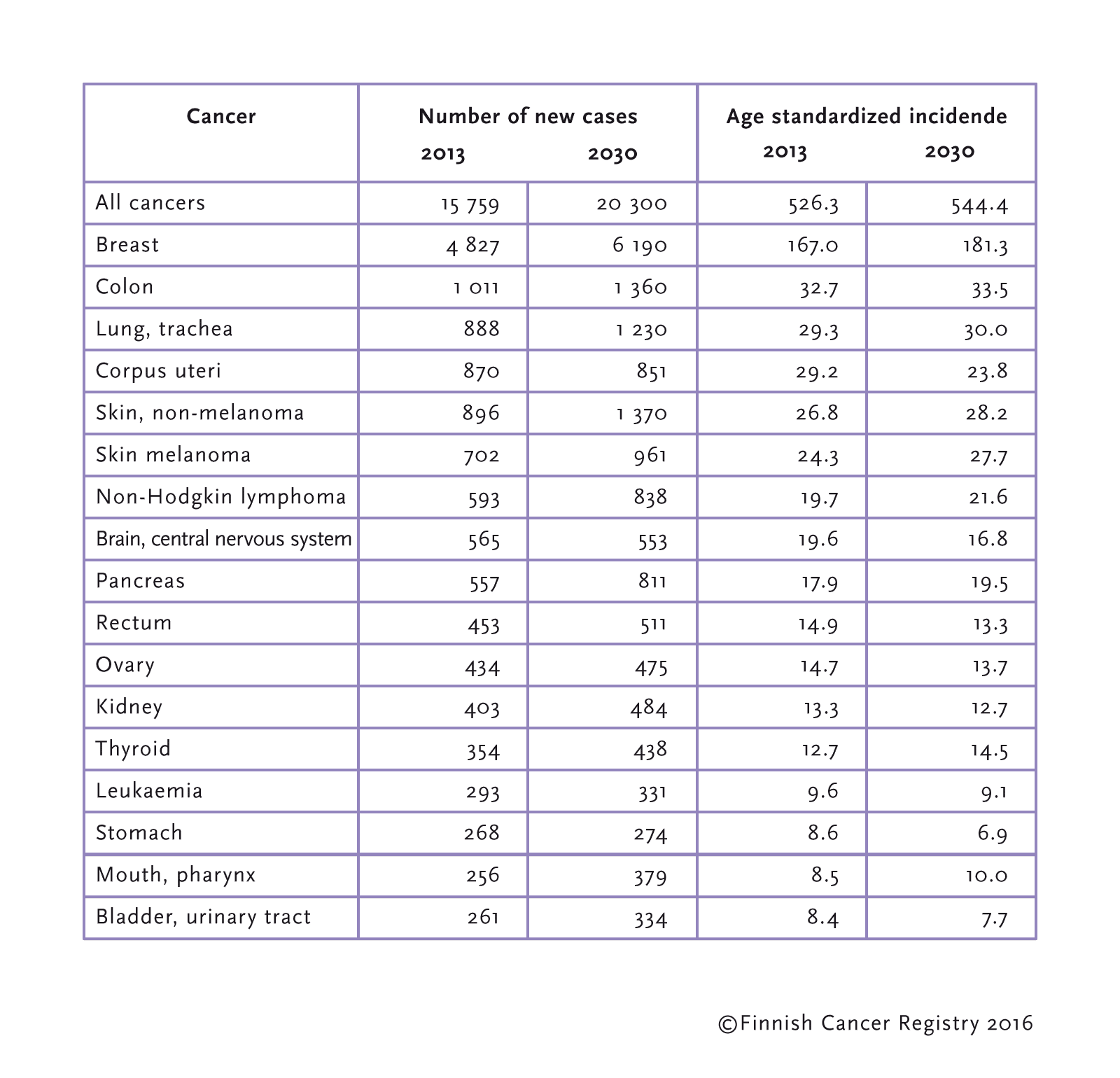 Table 2. Number of patients and age-standardised incidence of most common cancers for women in 2013 and prediction for 2030.
Table 2. Number of patients and age-standardised incidence of most common cancers for women in 2013 and prediction for 2030.
References
[1] Møller B, Fekjær H, Hakulinen T et al. Prediction of cancer incidence in the Nordic countries up to the year 2020. Eur J Cancer Prev 2002; 11 (Suppl 1): 1–96.
[2] Møller B, Fekjær H, Hakulinen T et al. Prediction of cancer incidence in the Nordic countries: Empirical comparison of different approaches. Stat Med 2003; 22: 2751–66.

